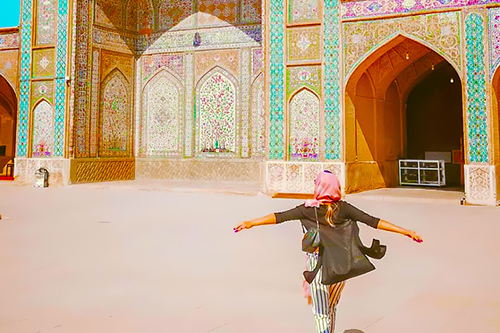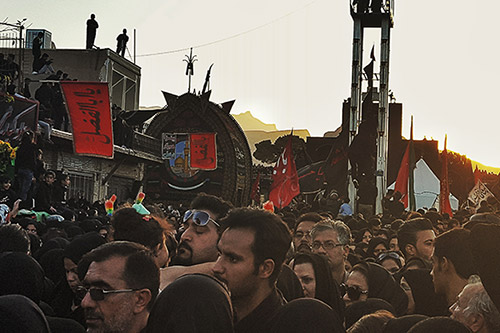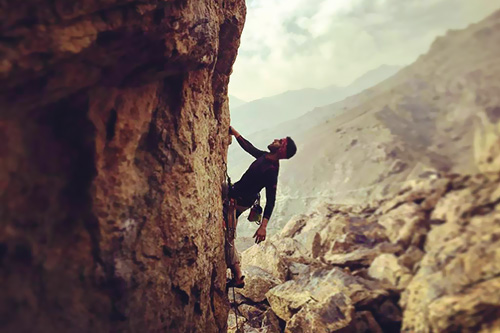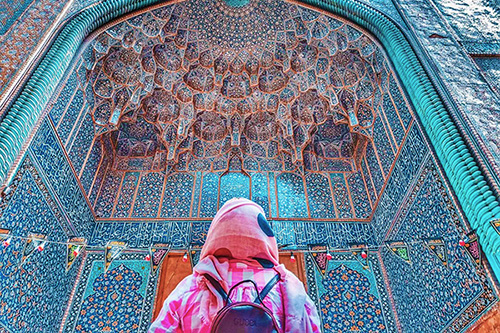 Signin with Google
Signin with Google Signin with Facebook
Signin with Facebook About Iran
About IranTop Things to Do in Qazvin
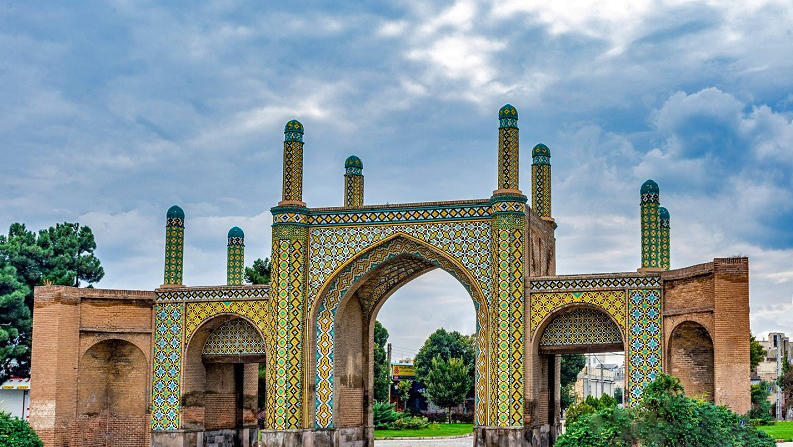
Qazvin is one of the historical cities that hosts the most registered national heritages among 31 provinces of the country. Its ancient history and pleasant climate, along with its delicious Baqlava sweets and savoury foods offer an inimitable package for every visitor. Archaeological discoveries in the plains of Qazvin have shown that this area dates back to seven thousand years BCE.
Once being the highway of the Silk Road and the capital of Iran during the Safavid era in the 16th century for over forty years, this city holds an entire history in its heart. Qazvin has raised many great calligraphers and that is why it is known as the cradle of Iranian calligraphy.

Famous as the stepsister of Isfahan, they both share many similarities, such as the Chehel Soutoun palace and magnificent bazaars. Follow below to find the most complete guide list of the purest natural and imposing cultural attractions of Qazvin.
An ultimate guide to the cultural and natural attractions inside the city of Qazvin
1. Sepah, the oldest street in Iran
When Qazvin became the capital of Iran, Shah Tahmasb, the Safavid king ordered to build a modern street in the heart of the capital. The name of the street is derived from the name of a neighbourhood called Sepah in Herat, where Shah Tahmasb lived during the reign of the crown prince. Many ceremonies and celebrations were held in this street which is now registered on Iran National Heritage List. At the beginning of the street, a remarkable portal treats eyes undeniably. This portal is one of the seven entrances to the Safavid royal citadel that is called the Ali Qapu portal.
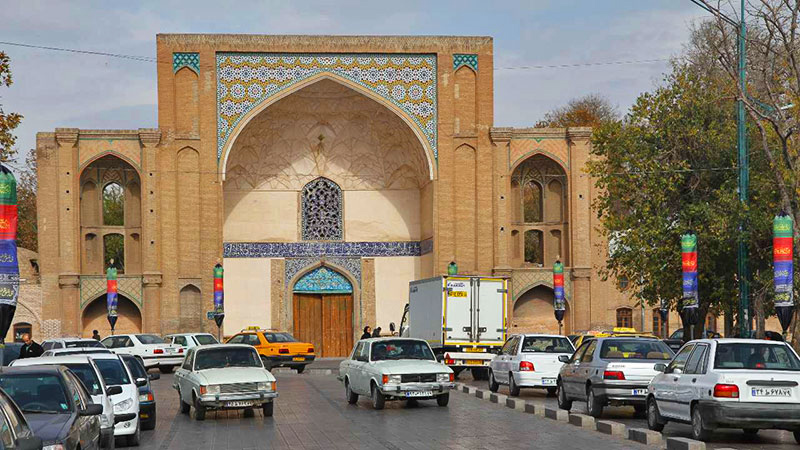
2. The city of Ab Anbar cisterns
The historical antiquity of Qazvin has made this province full of old excitement that attracts young and old. Ab Anbar is an indoor pool built to store water underground in Iran. There are a lot of Ab Anbars in Qazvin that go back to the Safavid and the Qajar period. For example, Haj Kazem water Reservoir, which is 150 years old, has bright-coloured tiles and inscriptions. Possessing many old elegant aba anbars has made Qazvin the city of Ab anbars.

3. Visit The Chehel Sotoun Palace
The Chehel Sotoun Palace is located exactly in the centre of the city which is known as the Sabzeh Meydan neighbourhood which used to be surrounded by the old city. From the second monarch of the Safavids until the Pahlavi monarchy, there are layers over layers that can be seen on the entire walls of this palace. On the second floor, there is a permanent calligraphy museum tight in the arms of the wooden colour stained glass windows. Chehel Sotun is one of the most famous landmarks of Qazvin city that is like a treasury for art and architecture.

4. Qajar Hammam, the anthropology museum of Qazvin
Hammam Qajar which is almost three centuries old represents the occupations and customs of old Qazvin. Walking through each room, you will be amazed by the architectural beauty of arches and domes decorated with blue tiles. Qajar bathhouse turned into the Qazvin anthropology museum after renovation.
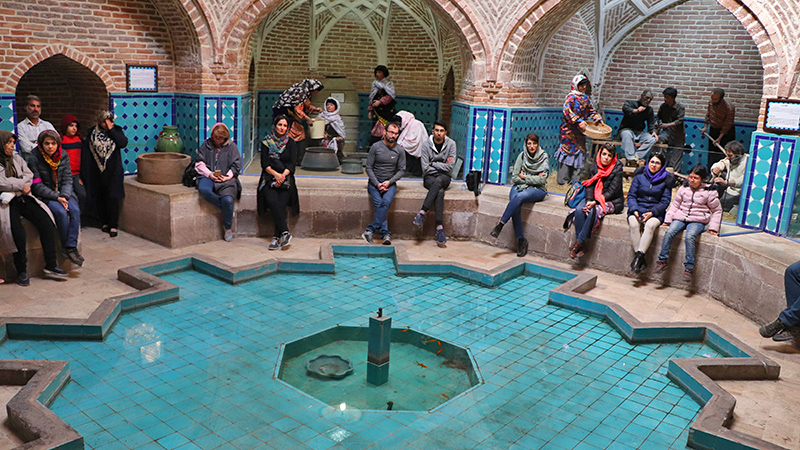
5. Old districts of Qazvin and the most lively street of the city
Wandering in the old districts of a city with more than a hundred years of history is like travelling in the time. But when you see life flows in every tile and behind and over each house, window or wall, you can be a part of it and play as a member of the lively museum. There are several historical neighbourhoods in the city of Qazvin among them Obeyd Zakani St. is worth being lost in for hours. You can catch the chance of being with the old merchants of this place and watch the everyday life of habitants vividly. Don’t miss to turn to the narrow alleys to see old buildings and enjoy the taste of nuts, fresh fruits that have just been picked and come from the countryside to be sold in tiny stores. Get to eat Ash and Halim or lentil soup from cute shops and smell the lemon odour that is being juiced right in front of your eyes in one of those offbeat shops. Don't miss seeing the historical roofed alley or Sabat in the 5th St. of Obeyd Zakani St. which dates back to 150 years ago and is registered as a unique national heritage in the city of Qazvin.
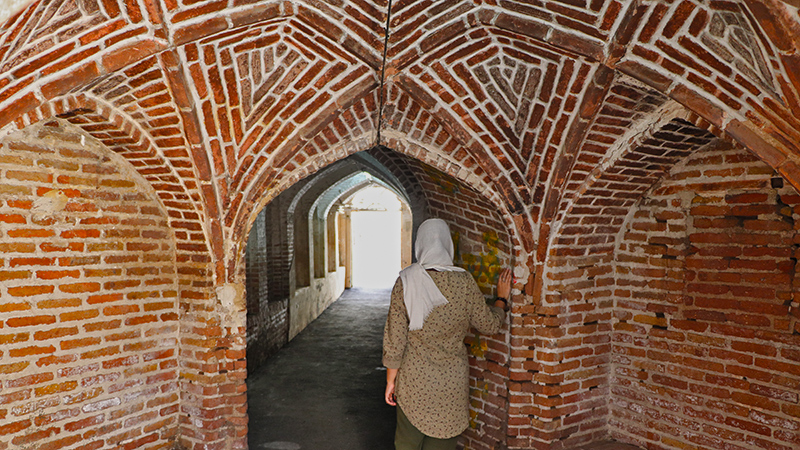
6. Barajin park and the tourist area
Barajin is the name of a small village in the north of the city. A huge area on the side of the road ending up to the village has been built to offer a whole tourist and entertainment package. Amusement park, zoo, artificial pool and residential complex besides many sports and entertainment places like paragliding site, bungee jumping, sledge and cable car are some of them. Barajin complex has a newly inaugurated suspension bridge in the vicinity of the Barajin Health road.
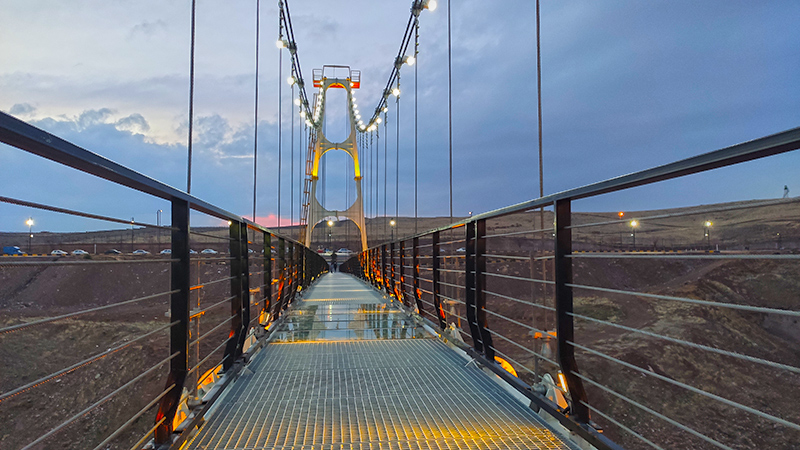
7. Historical houses, the historical gems in Qazvin
There are many traditional houses in Qazvin that are worth visiting and enjoying the Iranian architectural grace. If you like architecture and history, then visiting Aminiha House and Hosseiniyeh is a must-see in Qazvin. Presenting amazing artworks with all handmade details of mirror and plaster decorations, the building was constructed by the merchant Haj Mohammad Reza Amini and consists of three parallel halls with wooden sash windows and the ceilings are adorned with paintings and mirror works.
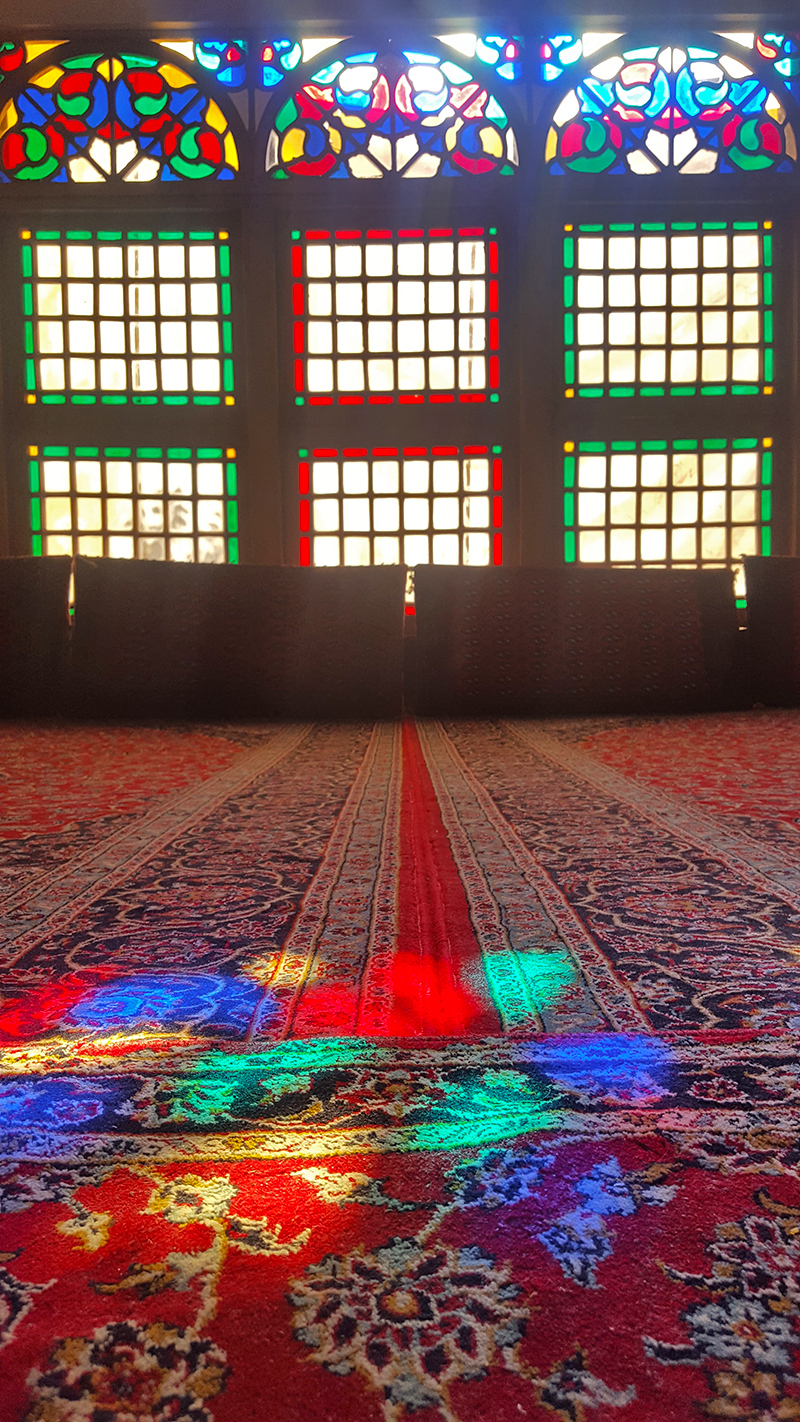
Another impressive historical house in Qazvin is located in Sultan Seyed Mohammad Alley and dates back to the Qajar era named Shahidi House. The artwork of the exterior building is very remarkable and the front yard has a peaceful and pleasant atmosphere besides there is a nice café inside the house that let you linger for a while and take delight in all the beauty and art all around.

8. Pahlevan Shahverdi Zoorkhaneh
Visit a national heritage that is a place for strength and courage as its name means the house of strength. Pahlevan Shahverdi zoorkhaneh is located in the Bazaar of Qazvin at the end of the Alaf’ha bazaar that dates back to the late Pahlavi time.
Pahlevan Shahverdi, the founder of this zoorkhaneh is called the father of Qazvin’s innovative wrestling because he was the first person who established wrestling sport in Qazvin. Visit this zoorkhaneh in the afternoon with the previous arrangement.
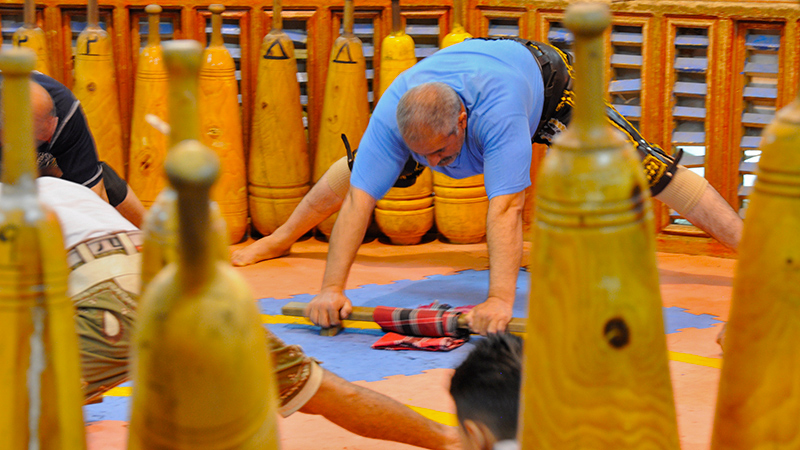
9. Sa’d al saltaneh and old bazaar
Qazvin's old bazaar dates back to the Safavid era when it used to be a communication and trading centre in the old trading route. In the Qajar time the traditional Bazaar was developed and the biggest urban caravanserai, Sa’d al-Saltaneh, became the adjacent trading market to it. Nabi Mosque is the neighbour of this beautiful caravanserai which is very unique for many architectural and construction designs.
Strolling in the roofed brick tiled bazaar, observing the daily life of people and sellers and buying handmade pieces of art and handicrafts and resting in one of those cafes with alcoves adorned with ornate tiles and bricks while the breeze coddles your face must be an accurate picture about a day trip to the Qazvin old Bazaar and caravanserai. Go for it.
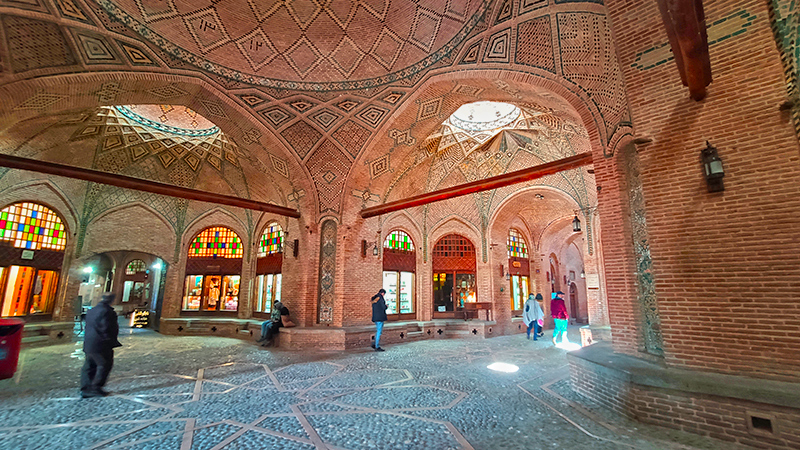
10. The religious collection of Qazvin from Jame Mosque to Shahzadeh Hossein shrine
The Jame Mosque or Atiq Mosque of Qazvin is one of the biggest and oldest mosques in Iran. The initiate building was constructed on a fire temple in the Sassanid era and each period of history, the layers and adjacents were added to it. The Iranian Islamic architecture of the mosque is awe-inspiring and the artwork details such as brick decorations, tilework and muqarnas adornments reveal the footprint of different dynasties and rulers from the Seljuk empire to the Qajar monarchy. Behind the Mosque the Raufi historical house is worth seeing.
Shazdeh Hossein was the son of the 8th imam of Shia who passed away on the way to Merv and was buried in Qazvin. His tomb was built and expanded during the Safavid time. This holy shrine is remarkable for the glittering mirror arts and decorations within the building.

A food hanker in Qazvin
For a food lover, Qazvin is just the right place to be. On every street or neighbourhood, many cafes, restaurants and tiny cosy breakfast shops are necessary to be found. And it’s a definite fact that no one can get bored or weary of the plenty of choices this city has to offer in the gastronomy field. No matter what, tasting Persian Halim, Emam Ash and lentil soup along with Nimroo(fried or sunny-side-up eggs) and traditional Omellete is a must for the breakfast or brunch at Sobhaneh-Sara shops (Breakfast cafes) in Qazvin.
Go for one of the most colourful dishes of Iran named Gheymeh Nesar of Qazvin and be sure your taste buds will hanker for, long after you’ve returned home.
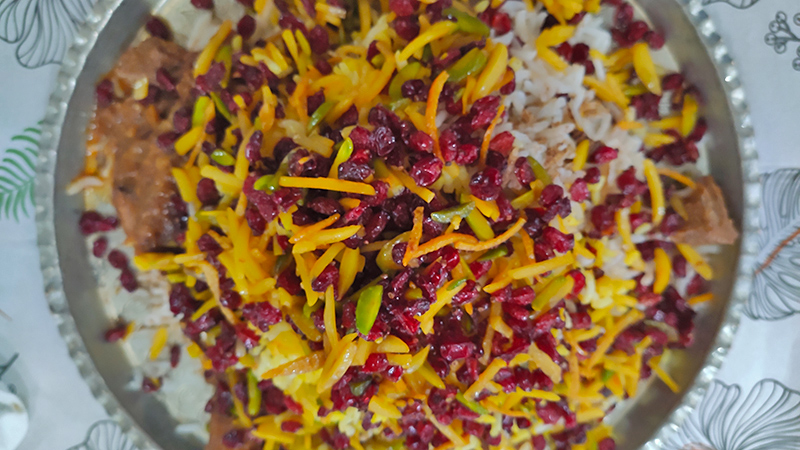
Now it’s time to introduce the best of Qazvin in the name of sweetness. Qazvin officially has many gardens and orchards all around it like a belt. Almost every Qazvini household owns ancestral fruit and nuts gardens inside or outside of the city. The crop of these gardens is used as the main ingredient for the age-old traditional sweets and cookies. There are some sweets that you should not miss while in Qazvin, Baklava, Nan-e Chaii, Sharbati Cake, Kasmeh, Nan-e Charkhi, Nazok Pesteh are just the most delicious ones.
Ceremonies
The exciting Rain Festival with delicious Doimaj dish
If you want to witness one of the most exciting ceremonies in Qazvin, do not miss the rain festival. On the fiftieth day of the Persian New Year (Nowruz), the people of Qazvin go to the reservoirs south of Qazvin and prey. If lucky, you will also get one of the delicious local dishes called Doimaj.
Attractions in Qazvin Province
1. Chenar Tree of Zarabad that sheds blood tears
The bloody plane tree of Zarabad stands in Zarabad village in the Alamut district of Qazvin Province. The thrilling phenomenon about this tree is very queer that this 30-meter high tree leaks a reddish sap on the same day, the 10th of Muharram month of the Hijri calendar every year. On this day the third Imam of Shia Muslims has been murdered and beheaded by the enemy. Shia Muslims relate this phenomenon to the grief of Ashura day.
2. Ovan Lake and waterfall
In the vast fertile planes of Alamut, there is a blue gem named Ovan Lake. The landscape of this lake that is surrounded by pristine nature and imposing rock mountains behind is on every traveller’s bucket list coming to see Qazvin and around it. In summer fishing and boating are perfect and in fall when the migrating birds come across the scenic beauty adds more beauty, but in winter the lake looks like a gorgeous empress wearing an all-white robe.

3. Alamut Castle
Alamut Castle is not only a spectacular historical attraction; It has beautiful nature that can be attractive to any tourist. Only those who can climb the hundreds of stairs in Alamut and reach the untrapped panoramic scenery at top of the hill and under the remains of the castle can understand the magic of this place. Feel the dark side of Medieval Iran in Hassan Sabbah’s fortress.
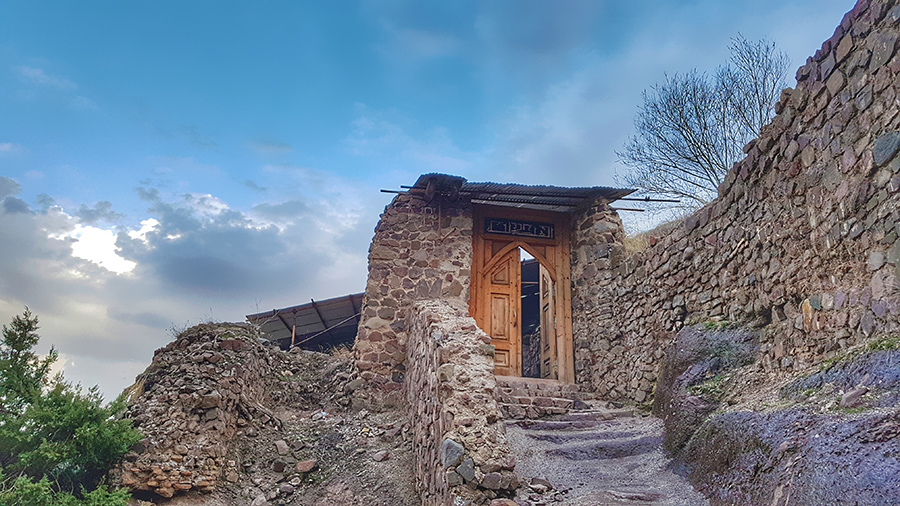
4. Suspension bridge of Avaj
Avaj Cable Bridge is located in the Avaj city in Shah Darreh Valley. It is the second-largest suspension bridge in Iran with 170 metres in length and 105 metres in height from the bottom of the valley which was inaugurated in 2018.
5. Semiran Castle and Qezel Ozan River
Qazvin also has various castles. Shemiran or Semiran Castle, which is located on a rocky hill next to Sepid Rood Lake, is one of the dazzling attractions of this area. Shemiran castle dates back to pre-Islamic times. In addition to its historical charm, its location along the Qezel Ozan River and the yellow flowers of the plains captivate everyone’s heart. Semiran Castle is in Bahram Abad village, Tarom Sofla country of Qazvin.

6. Day trip to the villages of cute dolls
Alwalak and Ardabilak are two attractive villages of Qazvin that apart from spectacular nature and historical monuments have unique souvenirs for guests. The culture of making dolls has been popular among the people of Qazvin for a long time and has been revived in recent years. The two villages are the main centres for making these dolls.

Qazvin tourism targets villages
Razmian, the city of golden clusters
Located within 45 kilometres of Qazvin city, Razmian is the capital of the western Alamut district at the foothills of the Alborz Mountains. It is a favourite destination for its golden scenery of the paddy rice fields. One of the Ismaili (Assassin)prominent fortresses “Lambsar Castle”, is just 5 kilometres away from it. The habitants of Razmian share a unique culture of the Tat ethnic group and speak a sweet language name Tati.
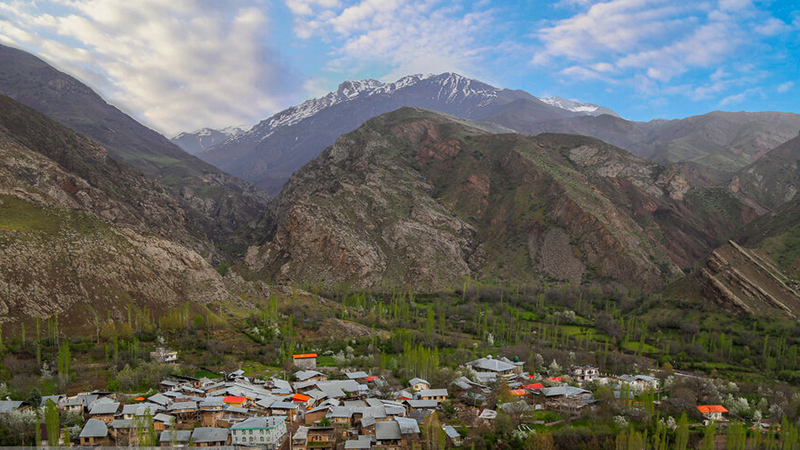
Andaj, high above the hard rocks
Surrounded by two rivers and striking rocks, Anda village is 80 kilometres away from the city of Qazvin in the northwestern of the province. It is one of the most popular tourist destinations in this region as a desirable place for rock climbing, nature tourism and cultural destinations. Andaj village has been designated as the national village of kilim, a kind of handwoven floor covering.
